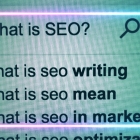The Lowdown on the Showdown Between Adobe Flash and HTML5
Adobe Flash has been the standard that has animated the web since the early days. But now, it's showing some security vulnerabilities as well as some cumbersome and outdated functionality. Many websites still rely on it, but is it time to say goodbye to the old standby in favor of something a little more nimble like HTML5?
A record player vs. and iPod
To make this a little easier to comprehend, let's think of Adobe Flash and HTML5 in a way that everyone can understand. Imagine that Adobe Flash is like a record player and HTML5 is an iPod. Both technologies are used for the same thing, but Adobe Flash is like a record player in that it requires a specific set of circumstances to work correctly. While fantastic, these days, record players are losing out because they are simply too fussy and inconvenient to use compared to other technologies like the iPod and other mobile devices.
HTML5
HTML5 allows us to do things like control what a user sees when they enter a website, embed videos, animations and other multimedia tools. It supports all kinds of content and provides us with many different features. It's capable of rendering content without having to install a plugin or player application that is required by Adobe Flash. HTML5 is capable of running on mobile devices which makes it a stronger choice if you're thinking of making a website mobile friendly.
Adobe Flash
Adobe Flash is also a multimedia platform. It's been used for years to add animation and interactivity to games, ads, and other things you find on the web. One of its biggest benefits is that it provides a fantastic, smooth graphical experience. Images come out crisper and cleaner in Flash and provide the user with a more pleasing visual experience.
But like our old friend the record player, its day may be coming to an end. It's a bit clunky and runs slowly on some platforms like Mac OS X. Adobe Flash is not supported by iOS and so a Flash file cannot run on an iPhone or an iPad. It's also not compatible with a touch screen and users need to install Adobe Flash in order for it to work. This requires that the device and operating system users have are compatible with Flash—things that are becoming increasingly rare.
HTML5 on the other hand requires no extra installs as it is already supported by modern browsers, runs much faster than Flash and is friendlier for mobile devices. It's becoming more popular because it provides users with an easier way to use and interact with websites.
If your current website uses Adobe Flash, you'll want to consider switching to HTML5 in your next redesign. You don't wanna be the person with a record player while everyone else is rockin' out with an iPod!

 An agency-eye view of Marketing, Advertising, Branding, Design & Media.
An agency-eye view of Marketing, Advertising, Branding, Design & Media.




